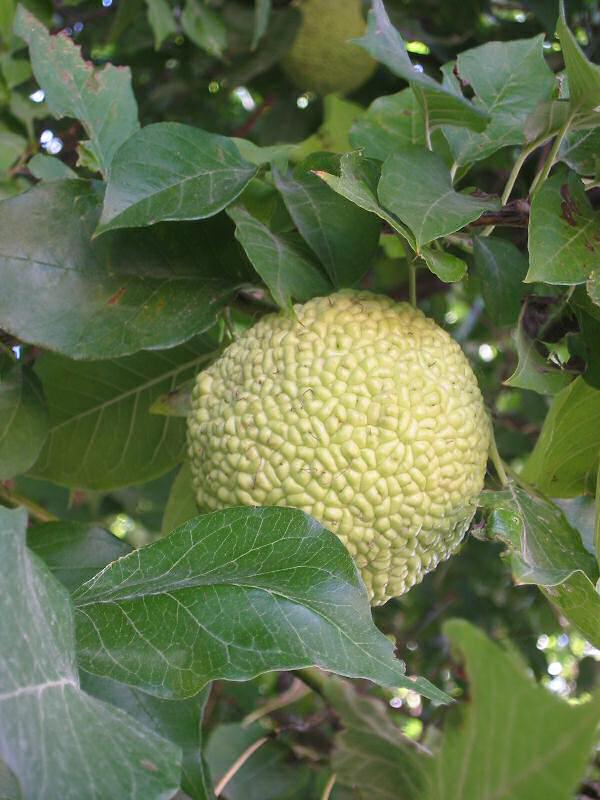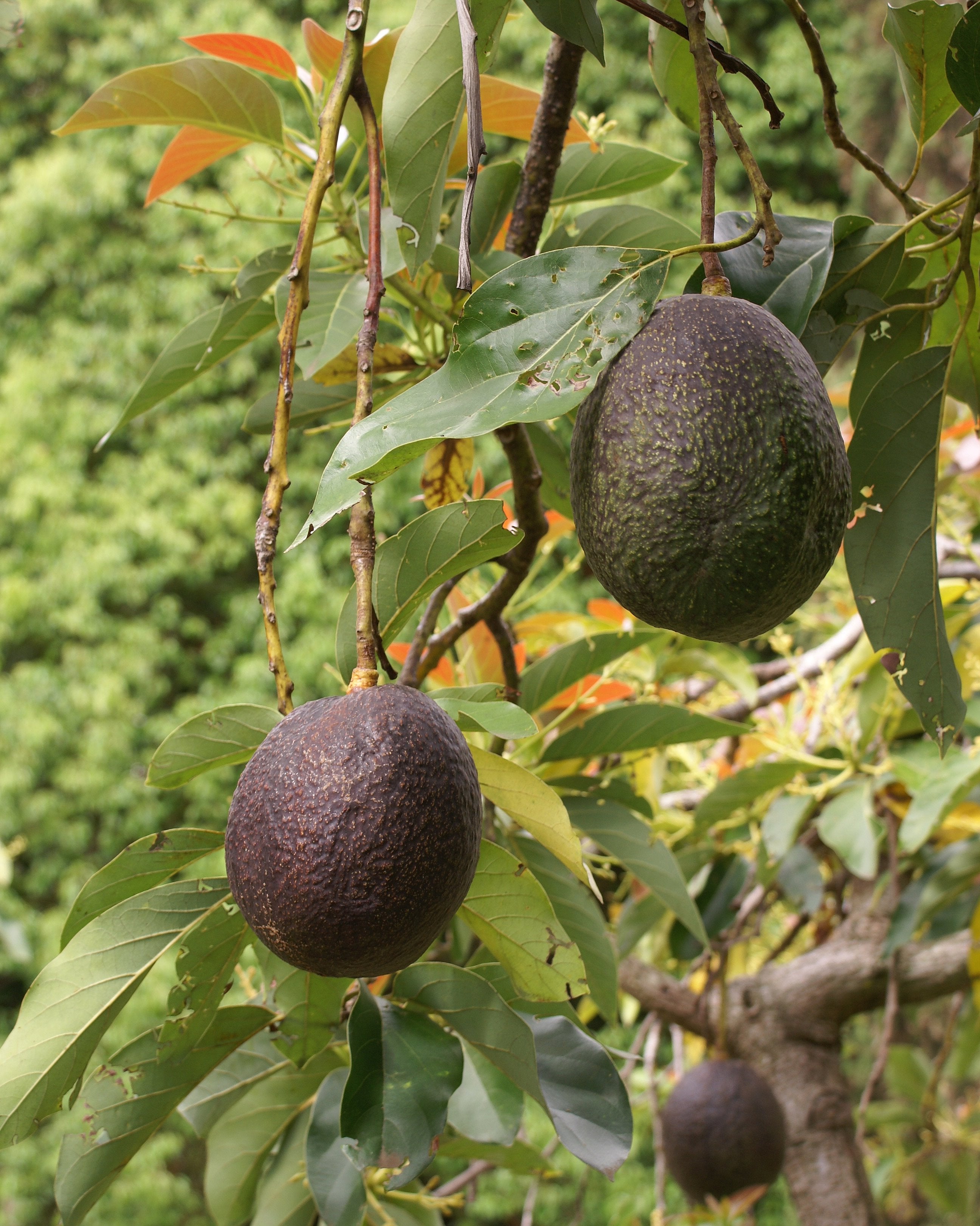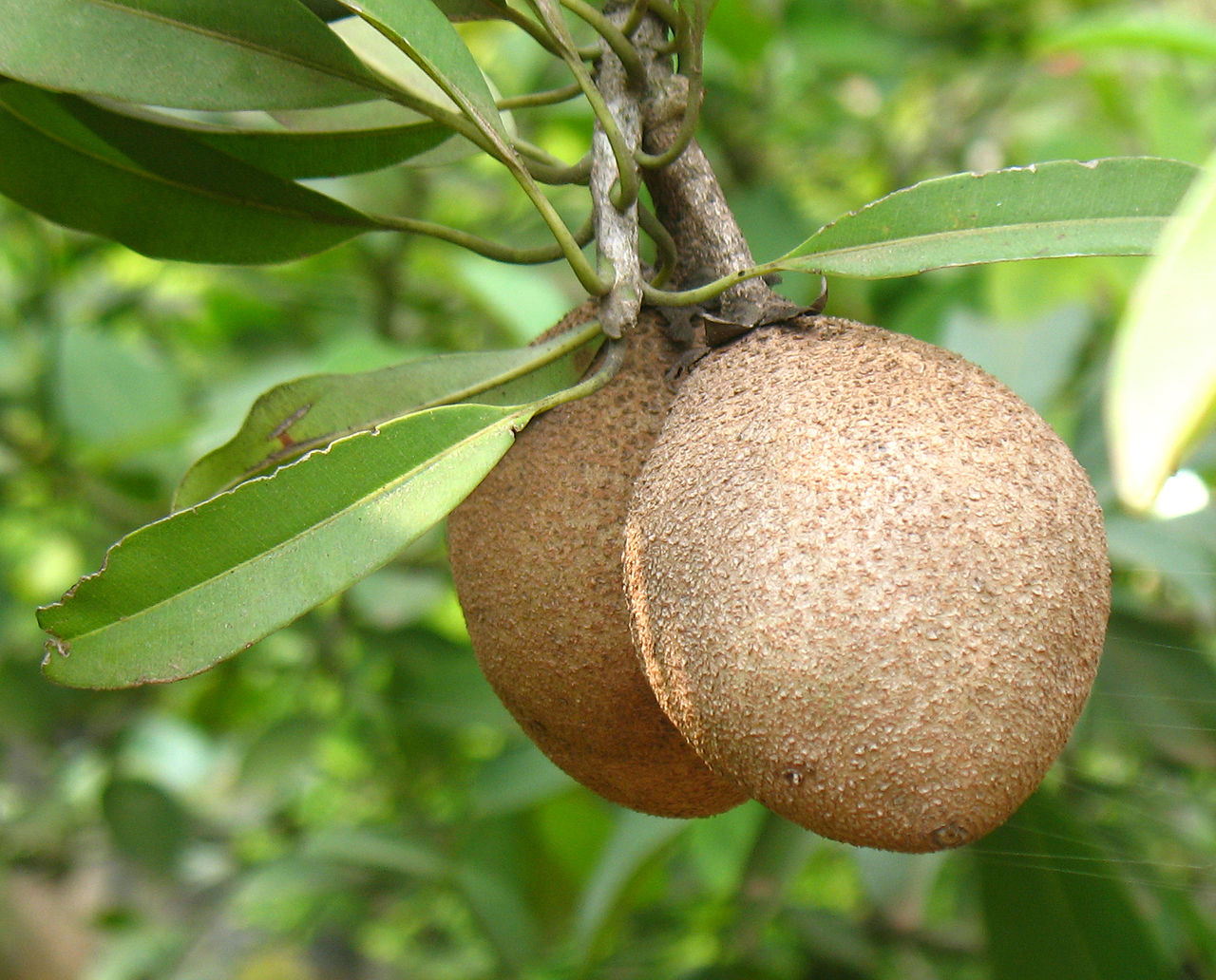
Tropical Wild Edibles - Osage Orange
Botanical name: Maclura pomifera
Common names: Osage orange, horse apple, hedge, hedge apple tree, bowwood tree, bois d’arc, monkey brains, monkey ball, yellow-wood and mock orange.
Family: Not in fact related to oranges but actually a member of the mulberry family “Moraceae”.

Physical Appearance: A medium sized deciduous tree which generally grows to between 12 and 20 metres tall. The tree has thick roots which are covered with a bright orange bark. Its leaves are long and oval, terminating in a point and varying in length from 8 to 13 cm and from 5 to 8cm in width. The leaves are a dark green with a lighter underside when mature eventually turning to a bright yellow in Autumn. The plant does have spines of an inch, one of the reasons this plant has been used as a hedging plant (for animal corrals). Particularly when pruned, the tree becomes considerably more thorny. As the tree matures, its bark becomes dark and deeply furrowed.

Natural habitat: Native to the Southern States of America. Takes better in a tropical or sub tropical climate but can survive in mild temperate climates.
Consumption: The fruit is not generally consumed by humans and rarely by foraging animals. In humans, the fruit can cause skin irritation and swelling. Although slightly irritant, it is edible (although most may not be able to tollerate the harsh flavour). The best nutrition is to be found in the seeds. Each fruit can hold up to 300 seeds. These are favoured by some animals including squirrels. Best use scenario - extract the seeds and lightly toast them for a nutty flavoured snack with some decent calorific content.

Point of interest: A desirable wood for its physical properties. Very stable in the ground, a strong, resistant wood, partially due to its chemical composition and partly due to its physical attributes. The wood has been used for making bows (and arrows) by native, American populations.
A yellow dye can be extracted from the wood. Simply place shavings/pieces in water and warm or heat gently.

When cut or damaged, the fruits will produce a milky latex sap which can cause severe irritation in the form of dermatitis, in humans. Particularly powerful when in its non-ripe state.
Makes a great fuel wood as it is extremely dense and hot burning. It is one of the most dense woods on the planet. This also makes it a useful material for tool manufacturing and in the manufacture of wooden instruments.

The Comanche would use a water infusion of osage for the treatment of eye conditions.

Photos courtesy of
User:katpatuka, FAL, via Wikimedia Commons
H. Zell, CC BY-SA 3.0 <https://creativecommons.org/licenses/by-sa/3.0>, via Wikimedia Commons
Pete unseth, CC BY-SA 4.0 <https://creativecommons.org/licenses/by-sa/4.0>, via Wikimedia Commons
Fernando Lopez Anido, CC BY-SA 4.0 <https://creativecommons.org/licenses/by-sa/4.0>, via Wikimedia Commons


